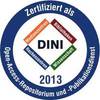Preview |
PDF, German
Download (13MB) | Terms of use |
Abstract
This work pursued the goal of developing imidazole-based N,O-chelating ligand systems, with which the production of ammonia was to be achieved via a vanadium enabled catalysis from the elements. The ligand was to be synthesized in a Debus-Radziszewski reaction with a 1,2-diketone and an oligoaldehyde as starting materials to form oligoimidazole preligands. Firstly, a synthesis of a di-tert-butylsalicyl, which was well known within our research group, was optimized regarding yield and purity. This way it was possible to achieve a multigram scale synthesis of the final diketone. Syntheses of diketones with more steric hindrance or rigidity were either unsuccessful or proved to have too poor a solubility to be used in further reactions. The second part of this work focused on the synthesis of oligoaldehydes. These modules were designed to depict an array of a varying number of aldehyde groups with different distances from each other, while exploring tetrahedral or even cubic structures, to allow a catalytic reaction without inter- or intramolecular deactivation of the resulting catalyst. Out of 17 oligoaldehydes it was possible to successfully synthesize eleven oligoimidazole preligands. Due to poor solubility, polycyclic aromatic hydrocarbons (PAH) and calixarenes were not eligible for this type of reaction. Based on the protocols in the PhD thesis of Dr. Florian Heinrich, catalytic experiments were conducted with these eleven preligands. The catalyst was prepared in situ and heated to 200 °C, while a stream of nitrogen and hydrogen gas passed over it. Produced ammonia was carried with it, protonated by methanesulfonic acid in a trap solution and quantified via 1H-NMR spectro¬scopy. Only two ligand systems were able to render the production of ammonia possible, but the latter either stemmed from the decomposition of ligand (triimidazotriazine) or was very close to the detection limit of the 1H-NMR spectroscopy (spirofluorenexanthene SFX). Other catalytic systems only managed to produce butanol, which meant that they were probably irreversibly deactivated by oxygen. The source of that contamination (butoxides in n-BuLi, CO/CO2 in gas mix, oxygen from air or moisture) remains the subject of further research.
| Document type: | Dissertation |
|---|---|
| Supervisor: | Straub, Prof. Dr. Bernd |
| Place of Publication: | Heidelberg |
| Date of thesis defense: | 23 May 2025 |
| Date Deposited: | 06 Jun 2025 07:29 |
| Date: | 2025 |
| Faculties / Institutes: | Fakultät für Chemie und Geowissenschaften > Institute of Organic Chemistry |
| DDC-classification: | 540 Chemistry and allied sciences |









